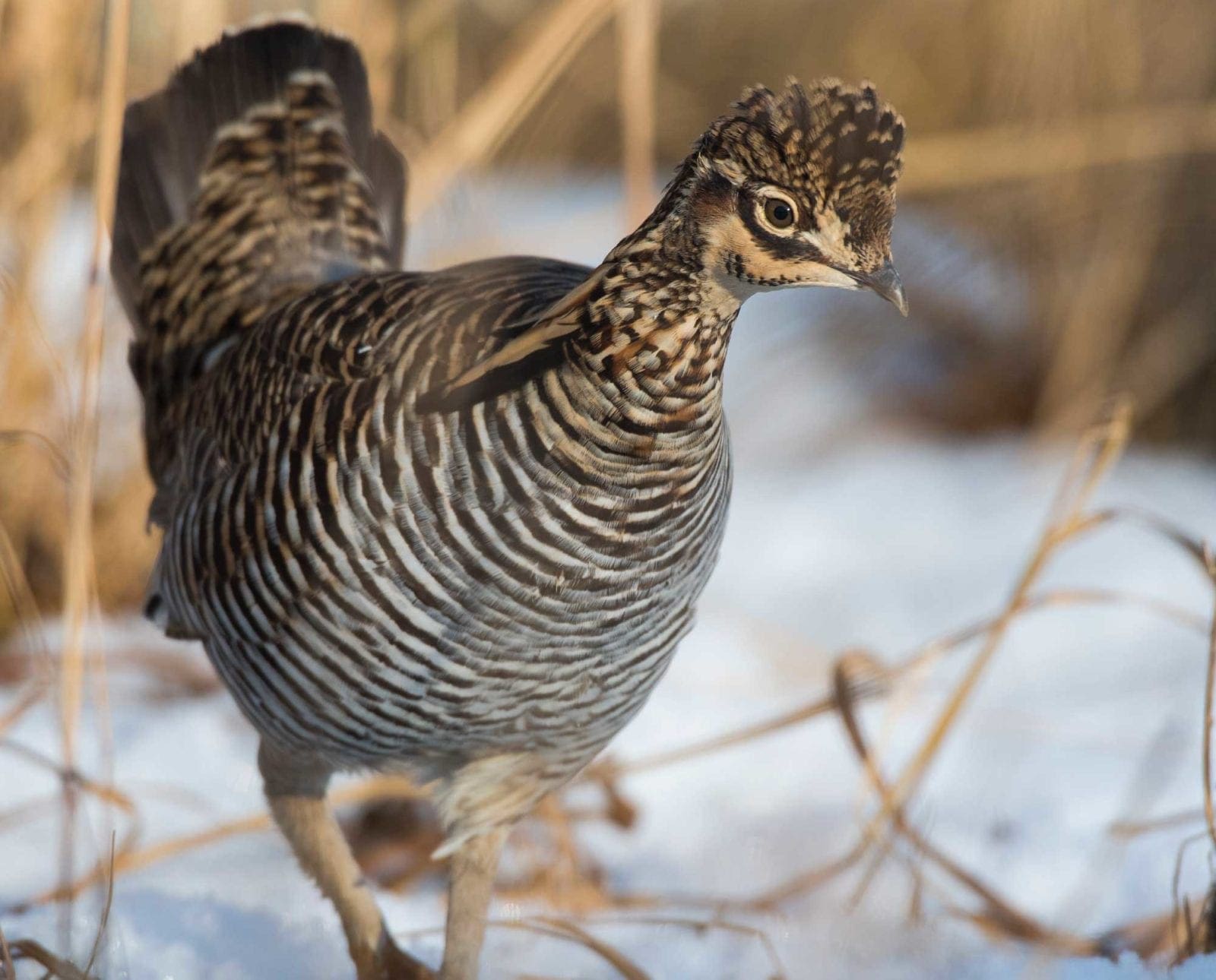Home » Grouse Species » Prairie Chicken Hunting » Late Season Prairie Chicken Hunting Tactics
Late Season Prairie Chicken Hunting Tactics

Edgar Castillo is a recently retired law enforcement officer for…
Exploring late season tactics for prairie chicken hunting.
In another hour, the sun will start to peek its way over the Kansas horizon. Each time I exhale, small plumes of warm breaths collide with the cold December air, creating a cloud of vapors around me. The northern wind has a slight kick to it this morning. Somehow, small pockets of a wintry breeze seep up through the slight openings of my sleeves and make their way through my coat, giving me the chills. Hopefully, I’m set up in the right location for the early morning flight.
Hunting Fence Lines for Prairie Chickens
I find a spot along the fence line. Not much cover and concealment; it’s pretty sparse. Very little vegetation to build a makeshift blind. I gather up whatever clumps of dried grasses and weeds remain and hope it’s enough to mask my six-foot three-inch frame. No orange for this day. Camouflage and hues of green and brown will mask this bird hunter. Not your typical colors associated with upland hunting, more for waterfowlers. I scan the skies around me, hoping I’ll see small silhouettes flying towards me. I’m looking for a certain flight pattern . . . a swift flight on series of rapidly beating wings, with short glides. Greater prairie chickens.
The Kansas prairie chicken season is split into two parts. Each season provides the upland bird hunter with a distinct way to hunt the iconic bird of the American frontier. The late season generally starts a week after the regular pheasant and quail opener.
Pass shooting Prairie Chickens
Traditional late season prairie chicken hunting strategy calls for pass shooting. Pass shooting is defined as firing at birds as they fly by instead of flushing them. The key to pass shooting prairie chickens is to scout. Scouting should provide hunters with info as to where chickens are roosting, loafing, and feeding. Prairie chickens are known to frequent sunflowers, corn, and soybeans. Bird hunters should focus on grasslands with nearby croplands. Winter flocks typically fly out of their roosting areas and into cut grain fields to feed both early and late in the day. After feeding, chickens settle down and loaf in native grass.
Once a location is locked down, hunters need to set up along tree lines, fence rows, and edges of fields and crops. Shoot the birds as they fly out from and into such locations. Patience is required when pass shooting. Stand up too early and hunters will give away their position, and the birds will flare and change course. Think duck hunting. This is where wearing camouflage comes into play.
Or at least blending into the environment. Fence lines on the prairie can be downright barren. Use tumbleweeds, fence posts, gates, hay bales, and other clumps of vegetation to break up your outline. Try to take prairie chickens as they’re coming in or directly overhead. That way, their momentum carries them closer instead of shooting at long-distance “fliers” that have the potential to fall onto private land.
Watch for Prairie Sentinels
Other tactics that can be used for late season prairie chicken hunting is to revert back to early season tactics and that means putting down some boot leather. Basically if you can find where the birds are loafing or even feeding, then sneaking up on them is not impossible. The main problem is that hunters will be outnumbered.
Chickens are now congregated in flocks of a dozen or more. As the temperature starts to drop and the cold weather for the late fall and winter has set in, chickens are forced to gather into large coveys. It’s not unusual for hunters to see as many as 30 or more chickens during the winter months.
With that many eyes, it’s not a surprise that the primary defense for prairie chickens is sight. Their second defense line is flight. And prairie chickens have been known to use a primary warning system . . . sentinels.
These lookouts will post themselves in trees, high in the bushes, or on hay bales. Always watching for danger. In my experience, I’ve only observed these guardians of the prairie poised on hay bales. Upon my stealthy approach, a large flock flushed hundreds of yards away. The hunt was over as quickly as it started.
Prairie chickens like to loaf in native grasses on hillsides or atop elevated ground. Because the birds take to high ground and have the tactical advantage (something from my military and law enforcement experience), they are able to see a safe distance away. These birds of the prairie survive by seeing predators first and flush before they are eaten.
Although these prairie birds are akin to fairly flat, open country, think rolling prairies interspersed with elevated ground. Habitat is critical to finding prairie chickens, just as it is to their survival. The vastness turns many hunters away after several miles of nothingness.
Because the prairie can be vast and expansive, look for fairly flat country with native grasses. Grasslands checker-boarded with crops. For ring-necked pheasant hunters, this will be a shift in cover type. What looks like prime pheasant cover and habitat is NOT where you will find prairie chickens. Stay clear of thicker grass and low-lying scrubby areas.
Edgar Castillo is a recently retired law enforcement officer for a large Kansas City metropolitan agency. He also served in the United States Marine Corps for twelve years. Edgar longs for the colors of autumn and frosty, winter days so he can explore the landscapes in search of wild birds in wild places. His passion lies in the uplands as he self-documents his travels across public lands throughout Kansas hunting open fields, walking treelines, & bustin’ through plum thickets.




